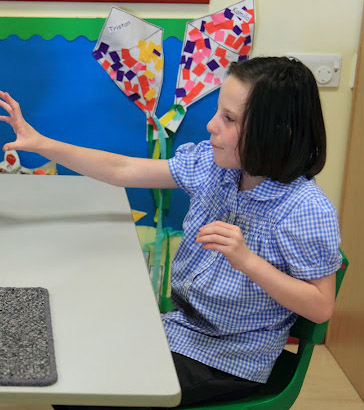
It is estimated that 3-6% of the population have dyscalculia.
In children with dyscalculia, numeracy fails to develop despite excellent teaching and rich environmental input.
Children with dyscalculia, have difficulty understanding even very simple mathematical problems at school and in everyday contexts.

Children with dyscalculia sometimes also have dyslexia although it is not known why these two conditions sometimes occur together.

Research (eg by Butterworth) suggests that dyscalculia is a congenital condition, caused by the abnormal functioning of a specific area of the brain.
Theories include:
- That the innate number sense that enables fast learning of number concepts fails to develop due to genetic factors or early brain damage
- Connections between components of the brain's mathematical systems fail to develop.

Whatever the neurological cause, education strategies need to circumvent or compensate for the missing skills. The lack of an innate number sense for learning numeracy quickly does not necessarily preclude slower learning.
Studies indicate that the following strategies might be helpful:
- Patient, slow repetition of the basic mathematical building blocks that are often taken for granted, and
- Teaching mathematical rules.

It is likely that children with dyscalculia who make the best progress through targeted teaching will not have additional learning difficulties.
Children with learning difficulties or others who do not make good progress in mathematics can take advantage of available external support, eg calculators.

Scientists at the Cambridge Centre for Neuroscience in Education are embarking on a project to investigate the neurological basis for dyscalculia. Initial work has focused on understanding of magnitude because a distinct area of the brain's parietal cortex seems to be specialised for understanding magnitude.
Children with dyscalculia have great difficulty in making decisions about quantity, eg 'how much is six?' but, surprisingly, the main indicator that a child has difficulties with magnitude – being slower to make judgements about numbers that are closer together than further apart – does not seem to apply to children with dyscalculia. However, children with dyscalculia do have very poor working memories, finding it difficult, for example, to keep relevant information in mind and to recognise mistakes.

When children start to learn maths at school, changes occur largely in the language areas of the brain. The Cambridge research team have postulated that the ensuing neural connections between memory, magnitude and decision-making processes may underlie what goes on in dyscalculia.
They will be testing this hypothesis using brain imaging techniques to discover exact information about where the affected networks are in the brain.

Lead some staff development to introduce colleagues to the research on the neurological basis of dyscalculia. You may wish to read around the subject a little more widely to inform your planning.
The purpose of this staff development is to raise questions, identify issues and start a dialogue as the first step to auditing and developing practice across the school (Level D). If you can, involve other professionals who work with children with dyscalculia to participate and contribute to the discussion.
Make a list of the questions/issues raised by the discussions.

Blakemore, S. and Frith, U. (2005), The Learning Brain: lessons for education. Blackwell Publishing.
Butterworth, B.(1999) The Mathematical Brain, London Macmillan
Dehaene, S. (1998) The Number Sense: How the Mind Creates Mathematics, London, Penguin.
Gelman, Rochel and Gallistel (1978) The Child's Understanding of Number, Cambridge MA, Harvard Press.
Nunes, T. & Bryant, P. (1997) Learning and Teaching Mathematics: An International Perspective. Hove: Psychology Press.
Keep up to date with developments in the neuroscience associated with dyscalculia at Cambridge.